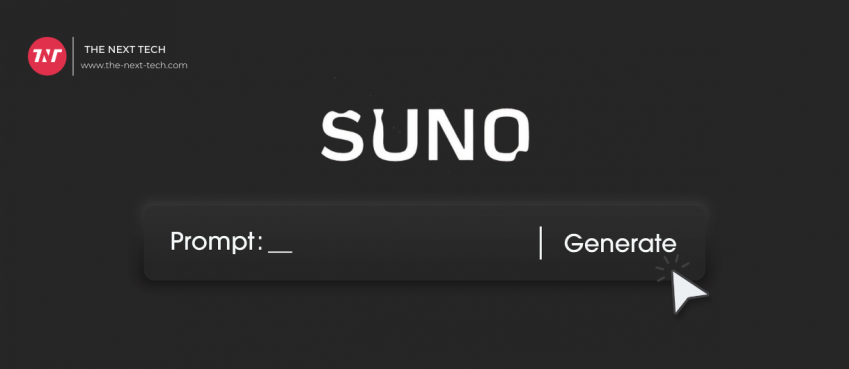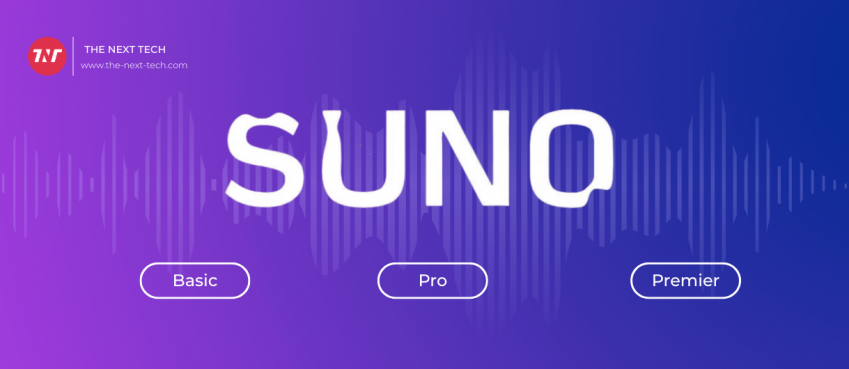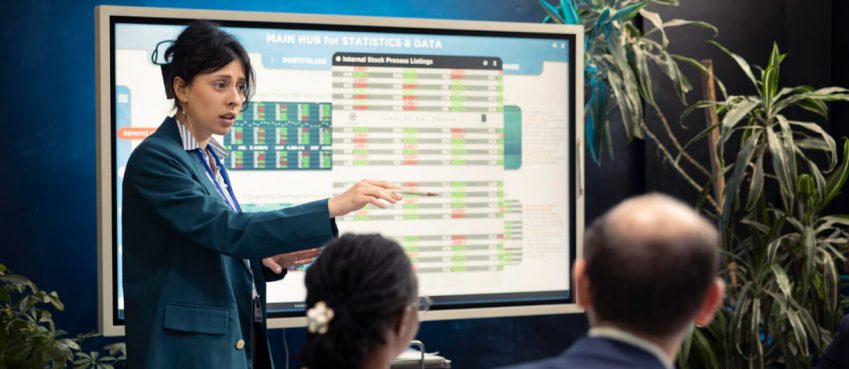
Imagine this: a late-night session with your laptop, your fingertips typing out the details of your professional journey — your resume. Long gone are the times when this tale was written solely on a basic sheet of paper.
In today’s digital world, it takes more than a rundown of past roles and skills to fascinate an employer.
Where does that leave job seekers like us? It’s simple: we adapt. We leverage the technologies around us to create resumes that echo the digital age we live in. But how?
As it turns out, there’s a whole world of possibilities. From creating an infographic resume that visualizes your skills and experiences, to crafting a video resume that brings your personality to life. Or choose AI-powered resume builders that customize and optimize your resume.
So, it’s time to transition from being ‘print ready’ to becoming ‘internet ready’. Let’s figure out how together!
The Shift from Traditional to Digital Resumes
If we cast our minds back to the resumes of yesteryears, we’re met with a basic, black-and-white document, type-written, devoid of any images or complex formats.
Essentially, it was a monochromatic list that highlighted our education, professional experience, and skills. You’ve probably created one before, with sections dedicated to work experience, education, and, yes, the evergreen ‘skills’.
These traditional resumes have a certain charm; they’re straightforward, clear, easy to print and pass along, and they do an adequate job of relaying your history and credentials. However, they lack personalization and often fail to fully capture who you are as a professional.
More essentially, traditional resumes don’t adequately reflect your strength in navigating the digital world. Today, almost every job demands some level of digital proficiency, and the traditional resume sadly falls short of showcasing this attribute.
This is where the digital resume comes to the rescue. A digital resume, while still having elements of a traditional resume — such as your experiences, education, and skills — adds a layer of creativity to it.
AI-written resumes, links to your projects, graphics representing your skills, a dash of color here and there, or an entirely creative layout catapults your resume into the digital realm.
While there will be scenarios where traditional resumes are still required, the rise of digital resumes can’t be overlooked. As technology evolves, they’re gaining popularity not just in tech-centric roles, but across different industries.
So, what exactly does it mean to have a digital resume?
Also read: 7 Best Woocommerce Plugins to boost your Store you must know5 Top Digital Trends in Resume Building
In a nutshell, having a digital resume means adapting to an environment where your resume isn’t just read, but also clicked, scrolled, shared, and interacted with.
This includes:
1. AI Resume Writers
The thought of artificial intelligence crafting your resume can sound a bit sci-fi. But it’s the real deal! AI resume builders like Kickresume can help you write the first draft of your resume and make sure it’s personalized according to each specific job you apply for.
Here’s an example of an AI-written resume:

2. Creative and Infographic Resumes
These can really make your profile stand out from the crowd. Think attractive resume designs, eye-popping fonts, and appealing color schemes. Platforms like Canva allow you to create infographics that illustrate your skills, experience, and accomplishments, making them more engaging and digestible.

3. Links in Resumes
Say goodbye to long lists of project names or publications. Today, you can include clickable links or QR codes in your resume that take the recruiter directly to your work, portfolio, LinkedIn profile, or anything else you want to show off.
Use portfolio sites like Behance to curate and showcase your work.
For example, as an architect, instead of writing a simple list, for example, “Worked on the design and execution of XYZ Building, ABC Mall, and DEF Villa,” you could use links.
Here’s an example:

4. Online Resumes and Sharing A Link with Recruiters
Gone are the days of stacking printed resumes in your bag. Now it’s all about sharing neat, professional links that recruiters can click to view your online resume. This not only makes the hiring process more convenient but also ensures your resume doesn’t get lost in the shuffle.
5. Video Resumes
A rising trend, video resumes can capture a recruiter’s attention like nothing else. They provide a platform to showcase your personality and presentation skills and add that extra ‘oomph’.
For this, you can use Biteable, YouTube, or even TikTok.
And, of course, let’s not forget our trusty sidekick in the job search — social media. LinkedIn, for instance, not only enables recruiters to learn about your professional journey but also catch glimpses of the projects you’ve worked on, the recommendations you’ve received, and the network you’ve built.
Social media platforms like Twitter, Instagram, or even Facebook can not only reflect your digital persona but also highlight your know-how in leveraging social media, a skill increasingly beneficial in the technology-driven workforce.
But remember, the key is to maintain a consistent professional brand across all your digital resumes and social network profiles.
In an era dominated by digital impressions, every click, post, and link counts. So keep it professional, keep it consistent, and most importantly, keep it ‘you’.
How to Choose The Right Format and Digitally Transform Your Resume
With the variety of digital formats we’ve just explored together, you might be asking yourself: ‘Which one is the best for me?’
Well, let’s walk through it, so you can make an informed decision:
- Identify your needs and strengths. Are you a graphic designer with a portfolio of eye-catching designs, a developer with a track record of impressive projects, or a marketing professional armed with impactful case studies? For visually compelling professions, infographics or online resumes with portfolio links might work best. On the other hand, if you’re more about words than visuals, maximizing an AI resume writer would be a good start.
- Consider the target industry. By understanding the nature of your industry and its openness to creativity and tech trends, you can decide the level you want to showcase in your resume. For example, if it’s an online marketing role, it would be great to opt for an online resume. If it’s a TikTok content creator role, a video resume would fit better.
- Think about the hiring process. Will your resume go through an applicant tracking system (ATS) first? Does the job ad ask for specific file formats? An AI resume builder can help you create a digital resume that’s also ATS-friendly.
Now, let’s have a look at how you can transform your traditional resume into a digital wonder, step by step:
- Choose a design platform: Think of a platform that suits your needs best, depending on the format you choose. It could be an AI resume builder, graphic design tools, or a video creation platform.
- Create your resume: Start building. For a creative resume, focus on crisp design and data visualization. For an online resume, consider the structure and user experience. For a video resume, work on your script, video quality, and background.
- Digitalize your content: Revamp your original content for digital. Update your profile, enhance your skills section with relevant digital skills, add hyperlinks to your projects, and include your LinkedIn (or other relevant) profile link.
- Proofread and get feedback: As you would with a traditional resume, check for typos, grammatical errors, and inaccuracies. Have a friend or mentor review your work and provide feedback.
- Share! If it’s an online resume, publish it and share the link with employers. If it’s a file, save it in the requested format and send it off.
Et voila! You’ve successfully transformed your traditional resume into a modern digital version.
One more thing, though.
Also read: Explained: Most Popular Sanrio Characters Across The World + (Fun Facts!)Mistakes to Avoid When Building A Digital Resume
Despite the flexibility and wow factor of digital resumes, they’re also ripe ground for mistakes.
These are some of the common pitfalls to avoid:
- Privacy issues: When you make your resume available online, it’s visible to a wider audience. It’s necessary to limit personal information to avoid identity theft or other privacy issues. Sharing your professional email, LinkedIn profile, or portfolio website link should suffice.
- Complicating design: Fancy fonts, confusing infographic styles, too many colors. Creativity is great, but not at the cost of readability and clarity. Your digital resume should also be simple to navigate and understand.
- Not being mobile-friendly: Potential employers might be skimming through your resume on their smartphones. Make sure your resume layout is responsive and appears correctly on different devices and screen sizes.
- Inconsistency in online presence: Your digital resume and your online persona should create a harmonious image. Random, unprofessional, or inappropriate content shared on your social networks can disrupt this image. So, routinely clean up and update your social media accounts to align them with your professional brand.
- Overuse of buzzwords: When we want to sound ‘engaging’ or ‘trendy’, we often sprinkle our resumes with buzzwords. But here’s the thing: terms like ‘enthusiastic’ or ‘innovative’ have been used so many times they’ve lost their impact. So instead of fuzzy jargon, focus on hard facts, figures, and specific examples that truly showcase your contribution and skills.
- Ignoring SEO: Recruiters now use software to find profiles matching the job role. Ignoring keywords relevant to your role can make you invisible to these searches.
Avoiding these mistakes will further strengthen your digital resume and increase your chances of catching the recruiter’s eye in the sea of applicants.
Top 10 News
-
01
[10 BEST] AI Influencer Generator Apps Trending Right Now
Monday March 17, 2025
-
02
The 10 Best Companies Providing Electric Fencing For Busines...
Tuesday March 11, 2025
-
03
Top 10 Social Security Fairness Act Benefits In 2025
Wednesday March 5, 2025
-
04
Top 10 AI Infrastructure Companies In The World
Tuesday February 11, 2025
-
05
What Are Top 10 Blood Thinners To Minimize Heart Disease?
Wednesday January 22, 2025
-
06
10 Top-Rated AI Hugging Video Generator (Turn Images Into Ki...
Monday December 23, 2024
-
07
10 Top-Rated Face Swap AI Tools (Swap Photo & Video Ins...
Friday December 20, 2024
-
08
10 Exciting iPhone 16 Features You Can Try Right Now
Tuesday November 19, 2024
-
09
10 Best Anatomy Apps For Physiologist Beginners
Tuesday November 12, 2024
-
10
Top 10 Websites And Apps Like Thumbtack
Tuesday November 5, 2024







